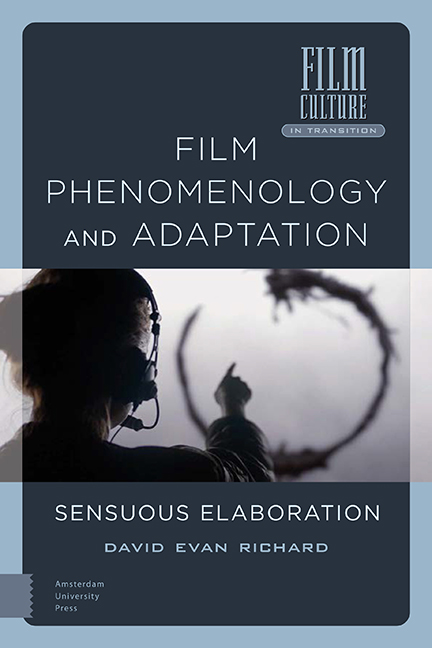Book contents
- Frontmatter
- Contents
- Acknowledgements
- List of Figures
- Introduction: A ‘Fleshly Dialogue’
- 1 Grave Visions: Visual Experience and Adaptation
- 2 Resonance and Reverberation: Sounding Out Screen Adaptation
- 3 Textural Analysis: Touching Adaptation
- 4 Textures of Imagination
- 5 (Re-)Mediating Memory’s Materiality
- Conclusion: Body Language
- Bibliography
- Filmography
- Index
4 - Textures of Imagination
Published online by Cambridge University Press: 27 May 2021
- Frontmatter
- Contents
- Acknowledgements
- List of Figures
- Introduction: A ‘Fleshly Dialogue’
- 1 Grave Visions: Visual Experience and Adaptation
- 2 Resonance and Reverberation: Sounding Out Screen Adaptation
- 3 Textural Analysis: Touching Adaptation
- 4 Textures of Imagination
- 5 (Re-)Mediating Memory’s Materiality
- Conclusion: Body Language
- Bibliography
- Filmography
- Index
Summary
Abstract
Rejecting any binary thinking that would have reading novels as an act of imagination while films are received through perception, this chapter examines how adaptations are experienced through the embodied imagination. This chapter builds upon approaches to imagination in cognitive aesthetics to argue that imagination is grounded in perception. This chapter draws on two case studies, Wonder (Stephen Chbosky, 2017) and Mood Indigo (Michel Gondry, 2013), both criticized for making tangible their literary sources in a manner than nullifies imaginative engagement. Rather, I argue that spectators feel their way into the worlds and existential feelings of their characters through the embodied imagination. This chapter suggests that perception can lead to a greater imaginative understanding of a work, the world, and others, and how such an imaginative connection might shift our point of view. That is, screen adaptations are equipped to enact a leap from sight to insight.
Keywords: adaptation, imagination, synaesthesia, embodied imagination, character engagement, existential feelings
Introduction: From Sight to Insight
Film Phenomenology and Adaptation: Sensuous Elaboration's attention to perception as the meaningful grounds of grasping adaptation and appreciating it as an aesthetic experience has firmly emphasized the critical value of attending to the materiality of screen adaptation. In doing so, this book has continued to challenge any claims that it is only novels that are conceptual and complex works that appeal to the reader's imagination, while screen adaptations in their sensual density are merely grasped by perception, and are impoverished or simplistic versions of previous material. But as the previous three chapters have shown, this is far from accurate: in their appeal to the eye, ear, and in their very tangibility, screen adaptations vivify their source material. In doing so, whether an adaptation's sensuous contours enhance or transform their source material is, in the first, grasped by the spectator's own materiality and their capacity to translate the senses into cognitive sense. Therefore, far from perception nullifying its activity, the sensing capabilities of the lived-body actively grounds imagination. This chapter seeks to flesh out the relationships between the ‘embodied imagination’ and the appreciation and evaluation of screen adaptation.
- Type
- Chapter
- Information
- Film Phenomenology and AdaptationSensuous Elaboration, pp. 129 - 160Publisher: Amsterdam University PressPrint publication year: 2021



